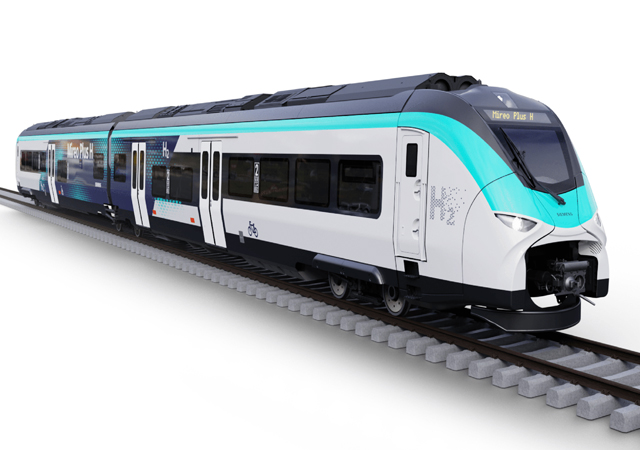
Climate change is a major threat to the planet, with the transportation sector contributing significantly to emissions. Despite challenges, low-carbon technologies are becoming more economically viable due to decreasing costs. The Avoid-Shift-Improve (ASI) framework is suggested to drive meaningful change in the transport sector, contributing to cleaner air, reduced noise, equitable access to services, higher quality of life, and more livable cities, and holds great promise for national and global efforts to combat climate change, according to an article by Boston Consulting Group (BCG), a global consulting firm.
TRANSPORTATION IS A CRUCIAL FRONTIER IN DECARBONISATION
The transport sector is a major contributor to global greenhouse gas (GHG) emissions, accounting for over a quarter of all emissions in North America and Europe. It is the largest emitting sector in the UK, US, EU, and Saudi Arabia. The transport sector is the third largest contributor to global GHG emissions after electricity generation and industrial sectors, stated the article.
The International Transport Forum reports that 98 per cent of nationally determined contributions (NDCs) mention transport and 83 per cent include transport measures. However, only 33 per cent set CO2 reduction targets for the transport sector.
To reduce emissions and limit global temperature rise, these numbers need to change quickly and be coupled with decisive and efficient implementation. The world is poised to use 86 per cent of its carbon budget by 2030, making this urgent.
The OECD predicts a 79 per cent rise in passenger and freight demand by 2050 due to expanding economies and populations. This poses a risk of increased GHG emissions. Policymakers must deploy technologies and implement policies to shift transport to sustainable modes, offsetting the rapidly increasing demand. This will help reduce GHG emissions and ensure a sustainable future for transportation services.
According to the article, economic prosperity in the Global South is expected to increase transportation demand, with high-income countries experiencing a corresponding increase in inland travel per capita. High-income countries have managed to decouple income growth from transportation demand growth through effective policy measures, modal shift initiatives, and investments in sustainable transport and cities.
However, the Global South is expected to experience even higher growth rates of transportation demand, with passenger demand expected to triple in sub-Saharan Africa and double in Southeast Asia by 2050. To prevent future emissions surges, decoupling income growth from transportation demand requires cross-country collaboration, targeted policies, and investments in sustainable infrastructure.
Transitioning to low-carbon technologies requires significant upfront costs, especially in the Global South. However, the long-term benefits can outweigh the costs. The World Bank estimates that global transport infrastructure investment must increase by $417 billion annually by 2030 to meet the Paris Agreement objectives.
Access to financial resources, green investment funds, and international partnerships are crucial for securing initial capital. Fostering private sector investments and innovative financing mechanisms is also essential.
Transport decarbonisation is closely linked to the energy sector, as low-carbon transport solutions like electric vehicles and hydrogen-powered vehicles rely on electricity supply. Coordinated efforts to decarbonise both sectors while ensuring reliable and affordable electricity supply will significantly impact the environmental impact of transport decarbonisation.
The lack of comprehensive data on transport emissions and climate impact in the value chain hinders accurate assessment and accountability for decarbonisation efforts. Implementing robust data collection systems for all modes, travel and vehicle types, locations, and life cycles, along with investing in advanced analytical tools, can enable evidence-based policymaking and track progress towards decarbonisation goals.
THE GOOD NEWS IS THAT GREEN COST PREMIUMS ARE DECLINING RAPIDLY
Despite the challenges of decarbonisation, advancements in technology and manufacturing are increasing the economic viability of low-carbon technologies by reducing the costs of electric vehicles (EVs), renewable fuels, and alternative propulsion systems, revealed the article.
By 2030, most low-carbon technologies are expected to be economically viable worldwide. The declining cost of low-carbon light-duty land transport this decade signals the imminent emergence of economically competitive transport solutions.
Politics will play a critical role in incentivising the adoption of cost-effective technologies and implementing favorable regulatory frameworks, tax incentives, and grants for low-carbon vehicles and charging infrastructure.
Recent policies like the Inflation Reduction Act in the US, the EU's Green Deal Industrial Plan, and Japan's Green Transformation Basic Policy are likely to enable other markets to reach green parity earlier than previously expected.
Building an ecosystem to encourage collaboration between research institutions, industries, and startups can foster innovation and accelerate the development of affordable clean transportation technologies. In maritime and aviation, the technology readiness levels of viable solutions are currently in stages 6-8.
INSPIRING DECARBONISATION STRATEGIES ARE EMERGING AROUND THE WORLD
The National Blueprint for Transportation Decarbonisation, launched in 2023, is the US's first whole-of-government approach to building a clean, safe, accessible, equitable, and decarbonised transportation system for all by 2050, claimed the article.
It provides a comprehensive model for the entire transportation system to reshape community design and land-use planning, promote cycling and walking, improve energy efficiency of public and private transportation, and deploy zero-emission fuels and modes of travel.
The UK unveiled its 2050 transportation sector decarbonisation plan, Decarbonising Transport: A Better, Greener Britain, in 2021. The plan aims to introduce a zero-emission vehicle mandate, extend the Renewable Transport Fuel Obligation, transform public transport infrastructure, phasing out nonzero emissions buses and coaches by 2040, decarbonise railways through electrification, deploy battery and hydrogen trains, and support a vision to shift half of all journeys in towns and cities to cycling and walking by 2030.
The UAE Smart Mobility Strategy aims to establish the UAE among the leading countries in smart intermodal mobility by 2032. It is structured around compatible infrastructure, integrated mobility systems, and dynamic policies and regulations with five main objectives: safety, sustainability, efficiency, reliability, and a seamless experience.
The German government follows a mixed technology approach to decarbonise the mobility sector, promoting research and market activation for battery electric vehicles (BEVs), fuel cell electric vehicles (FCEVs), as well as alternative fuels. The German Ministry of Transport operates two expert networks on sustainable and future-proof mobility, the National Platform Future of Mobility and the National Competency Network for Sustainable Mobility.
A FRAMEWORK FOR THE SECTOR’S DECARBONISATION
The Massachusetts Institute of Technology (MIT) research indicates that attitudes towards different modes of transportation significantly impact travel behavior, including short-term travel, vehicle ownership, and the adoption of new services and technologies like battery electric vehicles (BEVs). To reduce GHG emissions and foster a sustainable transport future, the ASI framework offers a comprehensive roadmap, stated the article.
Step 1: Avoid: Reduce GHG emissions from motorised transportation through demand management, with car pride being an important attitudinal factor. As Global South countries become wealthier, without effective policy, their middle class will likely result in higher vehicle ownership. Measures to change behaviors by curbing car pride purchases or shifting attitudes toward green car pride are essential.
Step 2: Shift: Modal shifts to less carbon-intensive transport are crucial to decarbonisation efforts. Promoting collective transport such as trains or ridesharing and expanding public transport networks significantly reduce emissions. Car-sharing schemes can also lead to reduced car ownership. Transport and city planners should prioritise investments in sustainable modes of transport, improve accessibility, and enhance the integration of different transport modes.
Step 3: Improve: Enhance vehicle design, improve energy and carbon efficiency, and diversify energy sources. Authorities engaged in shaping transport regulations and standards have the power to drive improvements in vehicle efficiency and promote the adoption of low-carbon technologies. Establishing stringent fuel economy standards, fostering research and development in lightweight materials, aerodynamics, and energy-saving technologies, and incentivising the use of renewable energy sources in transport will be essential.
More than 500 electric car models are currently on the market, more than double the number available in 2018, representing increased choice and affordability for consumers. Life-cycle GHG emissions of BEVs in Europe are 70 per cent lower than internal combustion engine vehicles in the current grid mix, and a further 40 per cent reduction is possible if renewable energy fully powers the grid.
The abatement potential curve under the ASI framework could progress until 2050, with the modal shift to public and active transport and electrification of land transportation having the highest impact. However, the updated National Development Goals under the Paris Agreement focus overwhelmingly on Improve measures, accounting for only 10 per cent of all actions outlined.
TOOLS FOR SUCCESSFUL DECARBONISATION IN TRANSPORT
The ASI framework aims to integrate the transport and power sectors, focusing on the reduction of greenhouse gas emissions. To achieve this, officials and decision-makers need to consider analytical tools and models, which can help conduct comprehensive baseline assessments, data analytics, scenario analyses, cost evaluations, and socioeconomic impact assessments. AI-powered analytics can streamline data collection, interpretation, and policy formulation processes, facilitating effective carbon-emission reduction measures.
Coupling the transport and power sectors is essential for GHG emissions reduction programs worldwide. The International Renewable Energy Agency suggests smart charging infrastructure for electric vehicles (EVs), vehicle-to-grid technology, and vehicle-to-building applications to ensure efficient renewable energy utilisation, peak demand reduction, improved system resilience, and enhanced integration of variable renewable energy sources. Collaboration between investments, regulatory frameworks, and cross-sectoral partnerships can increase flexibility and reliability of electricity use across the transportation ecosystem.
A fair and equitable transition strategy is needed to address the financial challenges faced by low- and middle-income countries in transitioning away from fossil fuel-based systems. The World Bank's Global Facility to Decarbonise Transport may be pivotal in addressing the green transport divide. However, progress on aligning financial flows toward the goals of the Paris Agreement remains slow, and tracked climate finance flows are distributed unevenly across regions and sectors.
Multilevel governance is also necessary to ensure comprehensive coordination and collaboration across ministries, departments, cities, and agencies. The US government's Joint Office of Energy and Transportation is mandated to break down silos in the energy and transport sectors to accelerate progress on key emissions reduction initiatives. The EU's Directorate for Energy, Transport and Climate supports policies and technological innovation to ensure safe, efficient, and sustainable energy and transport in all member nations.
SEISING THE DECARBONISATION ADVANTAGES
The ASI framework aims to integrate transport and power sectors to reduce greenhouse gas emissions. This requires the use of analytical tools and models, such as AI-powered analytics, to conduct comprehensive assessments and policy formulation, according to the article.
The International Renewable Energy Agency suggests smart charging infrastructure for electric vehicles, vehicle-to-grid technology, and vehicle-to-building applications for efficient renewable energy utilisation.
Collaboration between investments, regulatory frameworks, and cross-sectoral partnerships can increase flexibility and reliability of electricity use across the transportation ecosystem. A fair transition strategy is needed to address financial challenges faced by low- and middle-income countries transitioning away from fossil fuel-based systems.
The World Bank's Global Facility to Decarbonise Transport may be pivotal in addressing the green transport divide.
Multilevel governance is necessary for comprehensive coordination and collaboration across ministries, departments, cities, and agencies. The US government's Joint Office of Energy and Transportation is mandated to break down silos in the energy and transport sectors to accelerate progress on emissions reduction initiatives.
*Researched by Bakatjan Sandalkhan, Nalini Kothari, Meto Trajkovski, Giovanni Moscatelli, Simon Birkebaek, Shelly Trench, Annika Zawadzki, Santiago Ferrer, and Vineet Vijayavargia .

